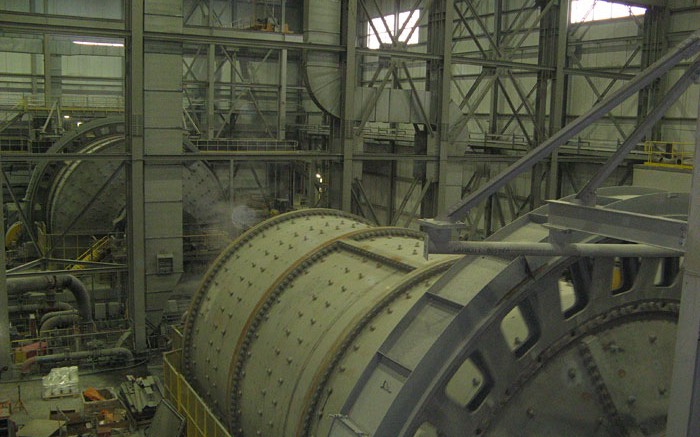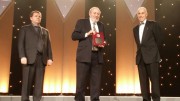A new study by the University of Toronto’s Rotman School of Management commissioned by the Ontario Mining Association measures the impact on gross domestic product, employment and government revenue from open pit and underground mining scenarios in a relatively remote part of northern Ontario.
Authors Peter Dungan and Steve Murphy of the Policy and Economic Analysis Program at the Rotman School assess the economic contribution to the province of a new gold mine and consider two scenarios in their research: building an open-pit mine over three years at a capital cost of $750 million ($250 million a year); and building an underground mine over three years at a capital cost of $600 million ($200 million a year).
The construction costs used in the two cases exclude exploration, planning, permitting and other pre-construction expenditures, and a remote northern location was characterized as one that “does not already possess much of the necessary infrastructure for mining production,” such as road and power networks. The study also assumes that a mill would have to be built as well as facilities for workers so that they could live on-site. In the open-pit mine scenario, 40% of the total capital cost would be spent on the mill, with another $80 million spent on connecting the mine to existing infrastructure, while in the underground mine scenario 20% — or $120 million — of the total would be spent on the mill, and another $65 million on connecting the mine to infrastructure.
According to their findings, building an open-pit mine would add $183 million to the province’s gross domestic product (GDP) each year during the construction phase and generate 996 direct jobs at an average compensation rate of $66,000 per worker. Once in production, the mine would add $300 million annually to Ontario’s GDP and directly employ 440 people at a total compensation rate of $142,200 per worker.
In the underground mine scenario, the study estimates that the mine would add $150 million to Ontario’s GDP each year during the construction phase and generate 805 direct jobs at $66,000 per employee. Once in production, the underground mine would contribute over $330 million a year to the provincial GDP and directly employ 620 people each year at a total compensation rate of $145,500 per employee.
In terms of government revenue — mainly from personal and corporate income tax, Employment Insurance premiums and all other federal taxes (including the GST) — the authors conclude that during the construction phase of the open-pit mine, governments would collect $60 million a year in revenue, of which $25 million would go directly to the provincial government. During the production phase, those revenue numbers would rise to $95 million and $38 million.
In the underground mine scenario, governments would collect just under $50 million a year in revenue during the construction phase, of which the provincial government’s share would be $20 million. Once in production, governments would receive more than $100 million a year in revenue, of which the provincial government’s share would be over $40 million.
When tallying the impact of each type of gold mine to the province’s GDP, the authors of the study define some of the “indirect” and “induced” economic impacts in the following way:
Indirect impacts include purchases the mining company would have to make to build and operate its mine, for instance, as well as the purchases that companies making the inputs for the products would need to make. Indirect impacts also involve providing transportation facilities to the mine, buying accounting, financial and scientific services, and replacing machinery and equipment during the production phase. Included in that category would be the inputs needed to make the mine’s bought inputs. The authors say that this “‘backward chain’ of inputs into inputs is quite extensive.”
Induced impacts are described as those that came from the spending of wages and salaries by workers that are employed either at the mine or indirectly at some of the supplier industries.
One of the study’s other findings is that a “significant share” of the impact of a new gold mine remains in the local area.
In terms of employment, for example, in the open-pit gold mine scenario, more than 1,350 of the 1,800 jobs created are estimated to be local once in production, while in the underground scenario nearly 1,700 of the 2,200 jobs are in the local area, the study estimates.
The study — An au-thentic opportunity: The economic impacts of a new gold mine in Ontario — also points to the intangible benefits of infrastructure like roads and grid connections. Like transferrable skills, the authors note, they “remain behind to benefit individuals and the remote community, even when the mine eventually closes down.”






A few comments:
-GDP has no debit column and is an entirely inappropriate tool to measure the economic impact of an ecologically destructive project such as a gold mine. Using GDP, even the BP Oil spill shows positive results.
-the employment figures are gross, not “net”. They assume that the workers are not employed elsewhere. In fact,most of them will be and are already substantially contributing to the economy.
-there is no calculation of the costs to taxpayers for infrastructure subsidies, hydro subsidies, and lost economic opportunities
– the costs of perpetual care for the mine tailings, waste rock and pits are not included.